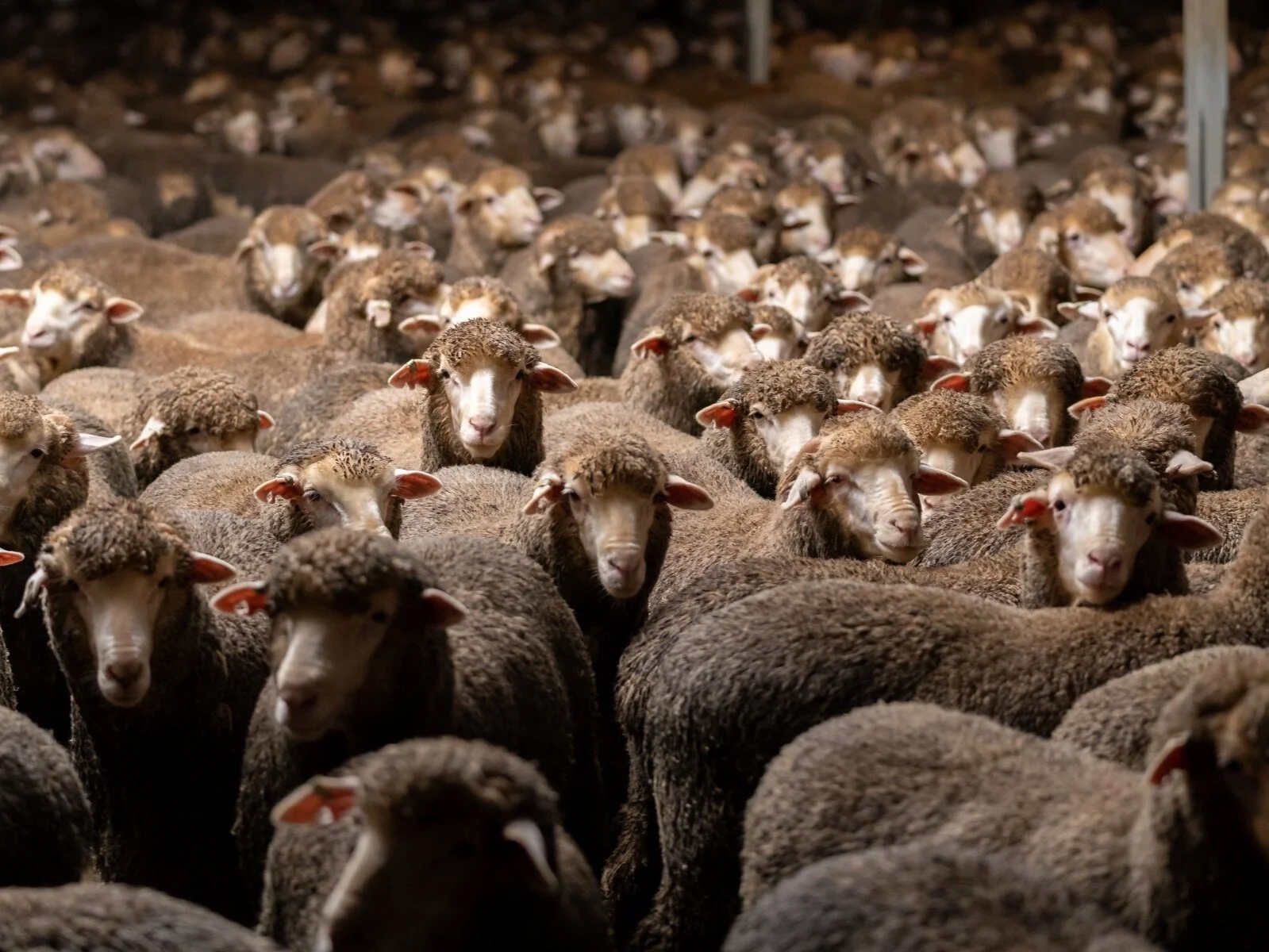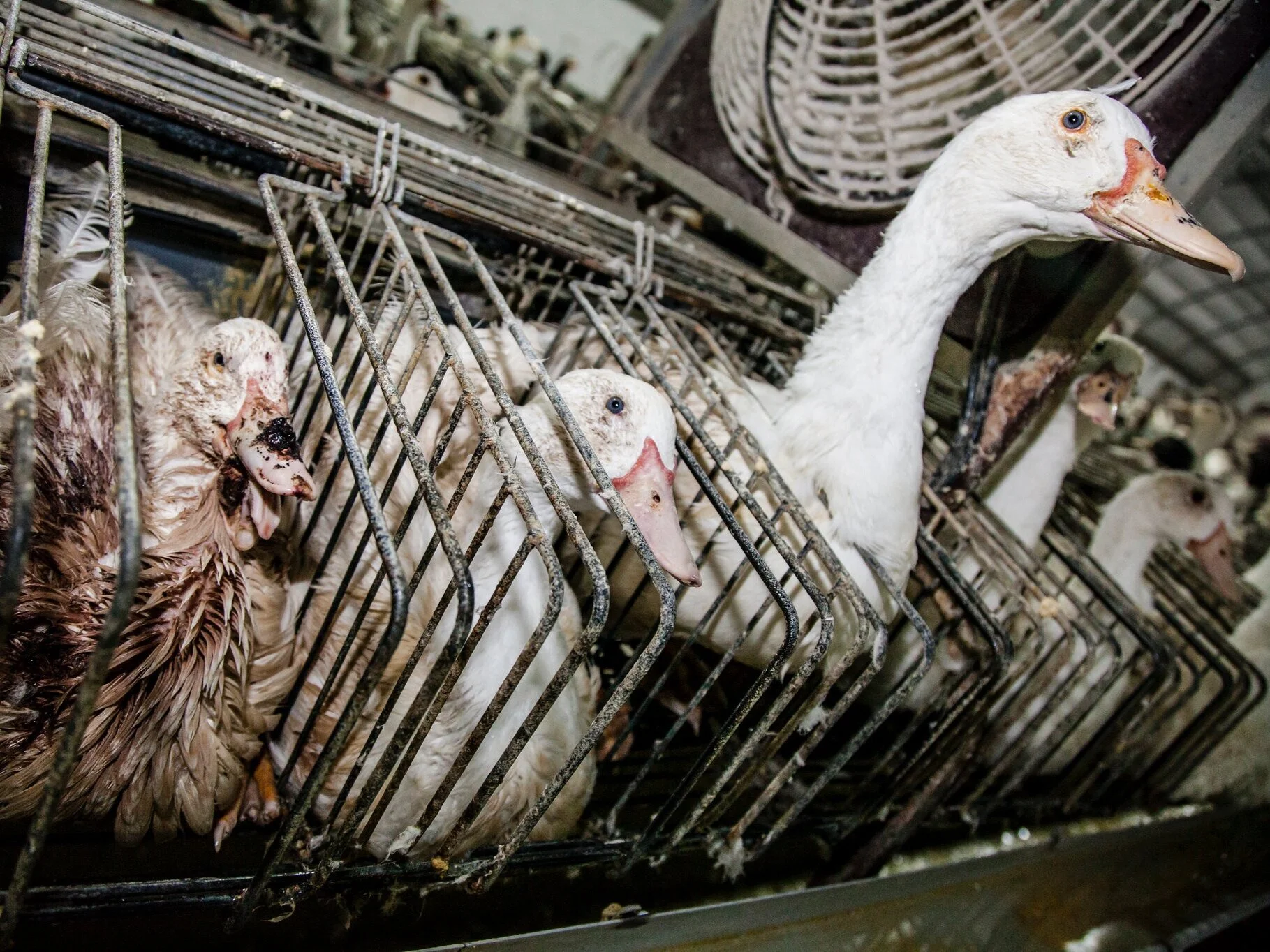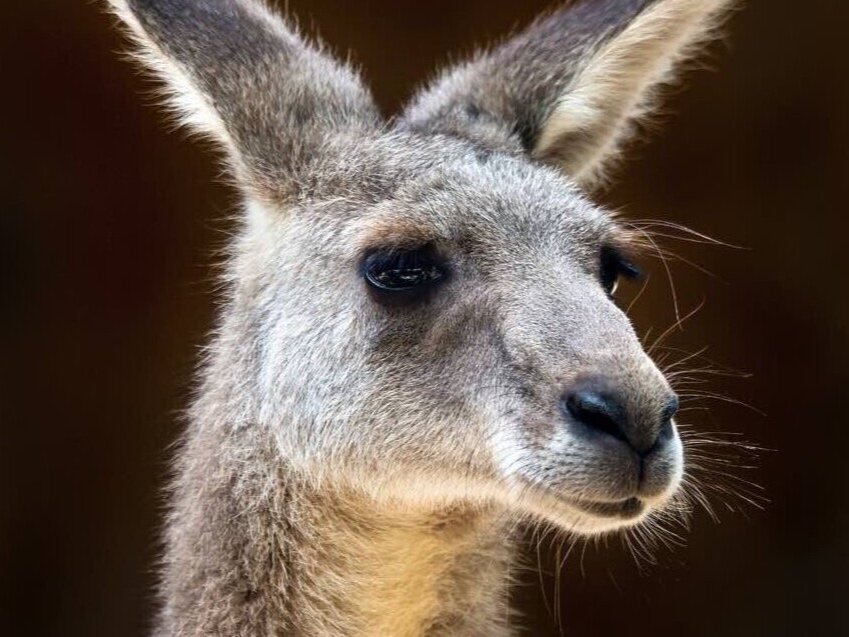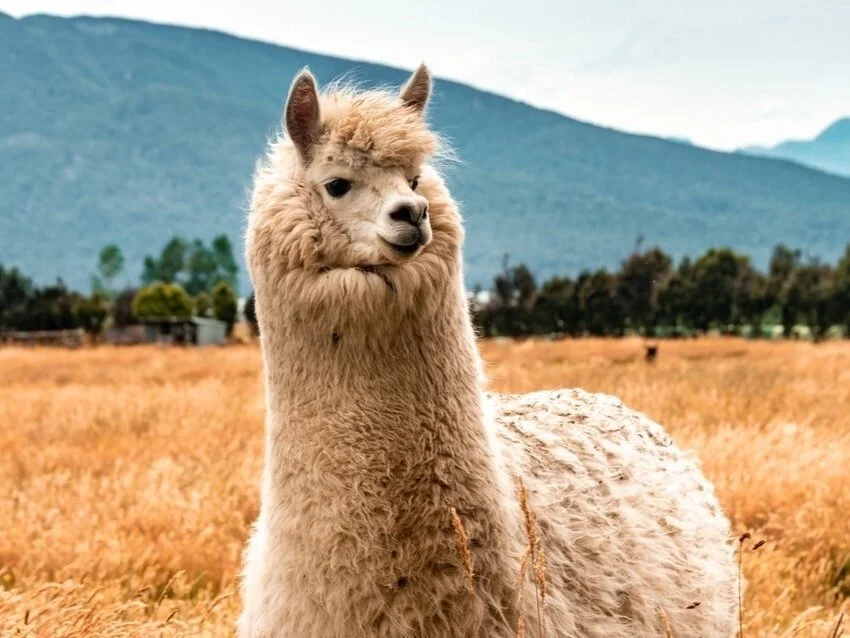
Every year, billions of our fellow animals suffer and die in the making of our clothing.
Cattle, sheep, ducks, minks, foxes, crocodiles and a plethora of other species lose their freedoms and lives in unethical, unsustainable systems that treat them like objects, rather than living beings.
Learn more about animals used in fashion and what needs to change in the industry.
Learn about how our fellow animals are treated unjustly for fashion
Fur-bearing animals
Foxes, minks, chinchillas, raccoon dogs and other animals spend their lives in barren cages before they’re slaughtered for fur.
Wild coyotes, foxes and other animals are caught in painful traps before they’re shot so people can wear their fur.
Image: Jo-Anne McArthur / The Ghosts In Our Machine
Cattle and calves
Bovines are the most commonly slaughtered animals in the leather industry, their skins made into shoes, wallets, bags and jackets.
Cattle are bred, exploited, mutilated and killed in fashion supply chains where leather is treated as a valuable co-product.
Image: Animal Liberation
Sheep and lambs
Sheep are slaughtered and exploited for their flesh, skin and wool. These industries are intrinsically linked – for this reason, wool is a product of slaughter. Well before they’re shorn, lambs are also painfully but legally mutilated by having their tails cut off with knives.
Image: Farm Transparency Project
Goats
Goats and alpacas are exploited and killed for their flesh, skin and hair. Even in the cashmere and alpaca wool supply chains, animals are slaughtered.
Despite the stories brands tell us of goats being gently combed for cashmere hair, the reality is far more brutal.
Ducks and geese
Down feathers come from ducks and geese and are often used to fill jackets. Some of the birds these feathers come from are live-plucked.
Other birds are bred and slaughtered for both ‘meat’ and foie gras, a cruel liver food product that sees birds confined to cages and force-fed.
Image: Animal Equality
Silkworms and moths
Silkworm cocoons are exposed to steam or submerged in boiling water for silk fibre to be reeled out from them. This practice kills the pupae inside the cocoon.
Research has shown that silk moths ‘remember’ being a silkworm, and that pain reception is not exclusive to species with brains and nervous systems like our own.
Crocodiles and alligators
These ancient reptiles have lived on Earth for millions of years, but the exotic skins trade sees them confined to barren, concrete pens.
With some species able to outlive humans, these crocodiles are often slaughtered at only a few years old. Their skins are sold as bags and other accessories worth tens, if not hundreds, of thousands of dollars.
Kangaroos
The shooting of native Australian kangaroos for their skin and flesh makes up the largest land-based wildlife slaughter recorded.
In this industry, adult kangaroos are shot, while their young are slammed against hard surfaces to be killed. Kangaroo populations are in serious decline, yet leather from this species is often labelled both ‘sustainable’ and ‘ethical’.
Alpacas
Alpaca wool is marketed as ethical and sustainable, but neither claim is true.
Alpacas are treated like objects and made to endure great distress when shorn. They’re slaughtered when they no longer produce quality wool. The production of alpaca wool also causes huge ecological destruction.
Ostriches
Ostriches are bred for their valuable skins and feathers, used in supposedly ‘luxurious’ fashion garments and accessories.
Ostriches do not moult, so their feathers are clipped or plucked out. Ostriches are slaughtered well before their natural lifespan should end.
Snakes and reptiles
Snakes and other reptiles are captured from their native habitat in the wild and slaughtered. Their slaughter is almost always unregulated by animal ‘welfare’ laws.
Snakes are often bludgeoned to death, filled up with water and hung by hooks, impaled through their heads.











